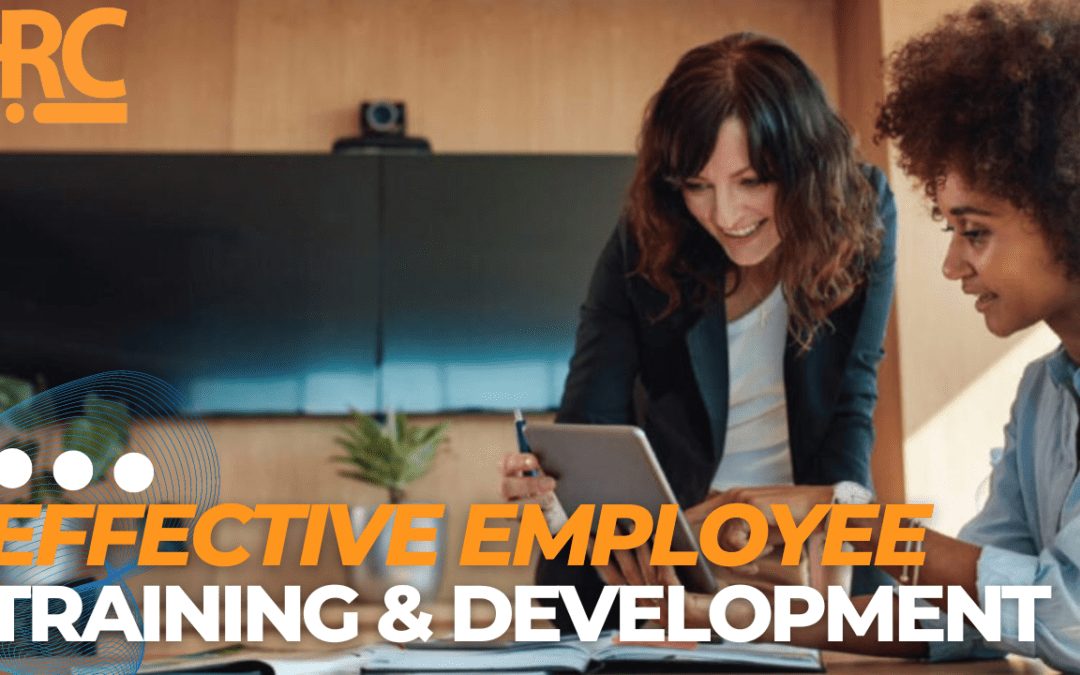Training a new employee can seem like a daunting task. You want to make sure that they receive the best training that they can so that they can become a valuable member of your team for the long term. But that requires a lot of time and effort. Even someone with experience will still need training when starting with a new company since every company runs differently. There will also be times when your current employees need additional training and development to keep up with changes in the company or industry, as well as being able to fill higher-level roles for the future. Understanding and setting up Career Tracks and Development Plans for your team creates a fast-track for development, as well as protecting your business by ensuring all key positions have back-ups.
Interested in Recruiting Solutions for Your Organization? Check out our Customizable Services
How Setting Up a Training and Development System adds to your Bottom Line
Employees are shown to acclimate and perform more effectively when they receive workplace training and development. For a business, training can improve productivity, safety, teamwork, revenue, and increase employee retention.
In 2020, it was estimated that inadequate training costs businesses collectively around $550 billion per year. In the same year, it was shown that companies that invested in their employees’ training saw a 21% increase in profits. These numbers help illustrate just how much companies can benefit from an employee training and development system.
Plus, in this market, an effective training and development system can provide a succession plan for key positions, therefore keeping your business running smoothly as well as saving on recruiting costs for the future. Below, are some important features of an effective Training & Development system:
Key Factors of The Employee Training and Development System
Orientation/Onboarding
- Even though supervisors will want new hires in the department right away, providing full and complete training at this stage helps team members to better acclimate in the future and stay longer with their company.
- During this training, employees need to understand the mission and goals of the business and how they are connected.
- The training should be directly tied to these goals, how a team member can be successful at your company, as well as the functional training for the role.
Ongoing Hands-on Training / Shadowing Plan
- Having a Training Plan per position ensures nothing falls through the cracks, and your team members are set up to succeed.
- An effective form of training for employees is hands-on training, that allows the person to learn from shadowing others, and then doing while being shadowed and getting necessary feedback in the process.
- This focuses on the individual needs of the employee and what they need to learn to effectively do their job, as well as progressively learning higher level tasks to continue to grow.
Coaching or Mentoring
- Assigning a more experienced employee with the new team member provides an ongoing mentor to help the new employee learn the tricks of the trade.
- The new team member will feel more comfortable in asking questions, while also learning from someone else’s direct experiences.
- This method can take the mentor away a bit from their normal job but has proven to provide better job satisfaction for the employer. As well as the mentor receiving more progressive responsibilities as a senior team member.

Coaching and mentoring is a common form of employee training
Cross-functional Learning/Projects
- This training method works well to provide a broad interaction of various knowledge groups that can help the team member learn and grow about the business and the team in many ways, such as a Kaizen/multi-department improvement project.
- Group training can also be done with cross-functional groups on overall business activities or information sharing, giving team members a chance to participate with others in the organization where they may normally not have much involvement.
Periodic eLearning
- eLearning utilizes online videos, tests, and preset courses to lead employees through the progressive training needed for their role.
- This is a great way to continually upgrade the knowledge base of the team, that can be done at the team members’ convenience.
Individual Development & Succession Plans
- Every employee will be different and need a different development plan.
- These can be connected to your annual review and succession plans, focusing on the training that will help the team member grow in their current role, as well as provide training opportunities to prepare their career for the next position – keeping your team members engaged at your company.
- Creating individualized plans each year, that your team members will drive, can help the employee focus on the key learning activities and they can grow at their own pace.
- As employees gain the skills for the next level position (which can be established from career ladders), the Company’s succession plan and promotion process becomes an easy objective tool within your development plan process.
Establishing a Training and Development system not only benefits the employees but also provides a more effective and sustainable business, with an eye on the future. This will set the stage for highly engaged team members, as well as fast-growing, agile, and successful businesses.
Learn how HR Collaboration Group can help your business with an evolving Training and Development system. Contact us today!

